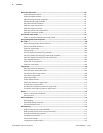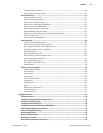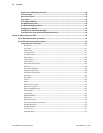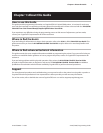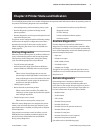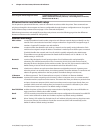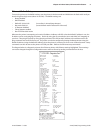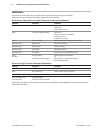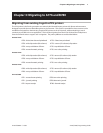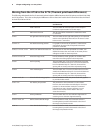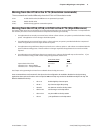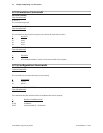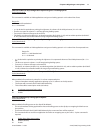
Chapter 2: Printer Status, Ethernet and Indicators4
A776 (B780) Programming Guide A776-PG00001 C 12/09
For more information about See this section
Accessing the remote diagnostic tallies “Command descriptions” in Chapter 5: Programming commands
(Status commands: Transmit printer ID, remote diagnostics extension,
Hexadecimal 1D 49 40 n)
Ethernet terms and default setup
For the printer to operate with Ethernet, a series of commands must be set within the printer. These commands can
only be set through the host computer and are not congurable through the printer conguration menu. See page 30
for the Ethernet setup commands list and page 113 for command descriptions.
Default setup instructions and sample Ethernet diagnostic printout are on the following page. Note the dierences
between an Ethernet and a standard RS-232C printout.
Ethernet Terminology
MAC address a unique hexadecimal serial number assigned to each Ethernet network device to identify it on the
network. Each communication board has a unique number from CognitiveTPG’s assigned range of
numbers. CognitiveTPG numbers start with: 00:E0:70.
IP address a unique number that identies each node on a network and to specify routing information. Each
node must be assigned a unique IP address. The address is made up of two distinct parts: a network
ID, which identies the network; and a host ID, which is typically assigned by the administrator.
These addresses are typically represented in dotted-decimal notation, such as 138.58.11.27. The
default setting is: 192.0.0.192
Net mask a series of bits designed to “mask” certain portions of an IP address and is used primarily for
subnetting. The standard netmask for a Class C network is 255.255.255.0, with the last octet (.0)
directing the host to look there for the machine number. The rest (225) is the network number. The
default setting is 0.0.0.0. This will use the standard mask of the selected IP’s class.
Gateway a hardware or software set-up that translates between two dissimilar protocols. A gateway, even
when the printer is on another subnet, is not always needed. The printer initiates no connection and
obtains the gateway address from the host packets. The default setting is 0.0.0.0 (none)
LP Daemon an Ethernet protocol. The LP Daemon listens on port 515. Default is LP Daemon disabled.
Telnet Daemon a protocol for remote computing on the Internet. It allows a computer to act as a remote terminal
on another machine, anywhere on the Internet. This means that when you telnet to a particular host
and port, the remote computer (which must have a telnet server) accepts input directly from your
computer (which must have a telnet client) and output for your session is directed to your screen.
The telnet server listens on port 23. The default setting is enabled.
Raw TCP/IP Port enables the printer to listen for raw tcpip communications. Specifying this to zero will disable raw
tcpip connections. Default value is 9001 enabled.
BootP a TCP/IP network protocol that lets network nodes request conguration information from a BOOTP
“server” node. Use BootP to obtain the IP address at power-up. Default setting is disabled.
DHCP allows “leasing” of IP address for a limited time. If no IP address is found at start-up, the printer waits
for two more minutes. If no address is found after two minutes DHCP will automatically set the
default IP address. Default setting is enabled.



